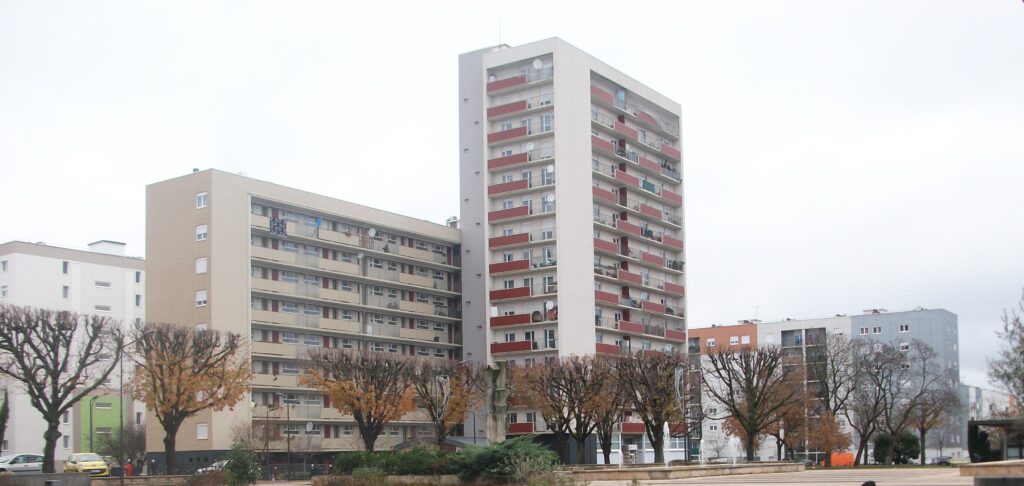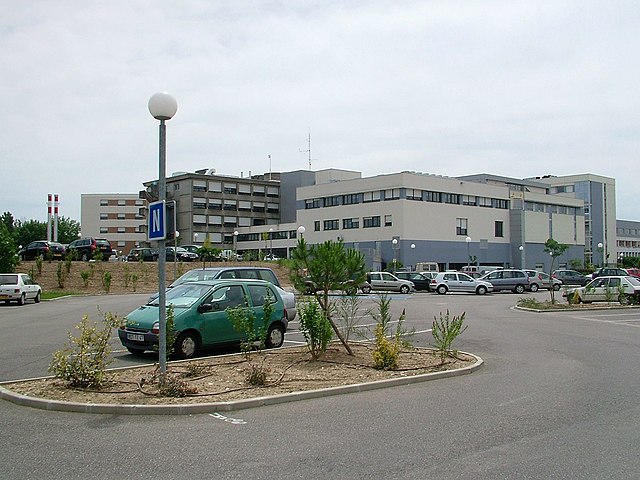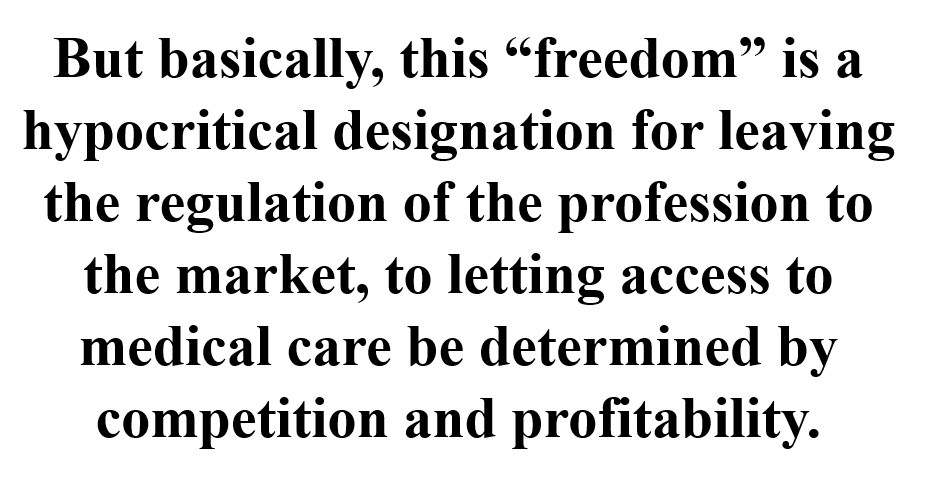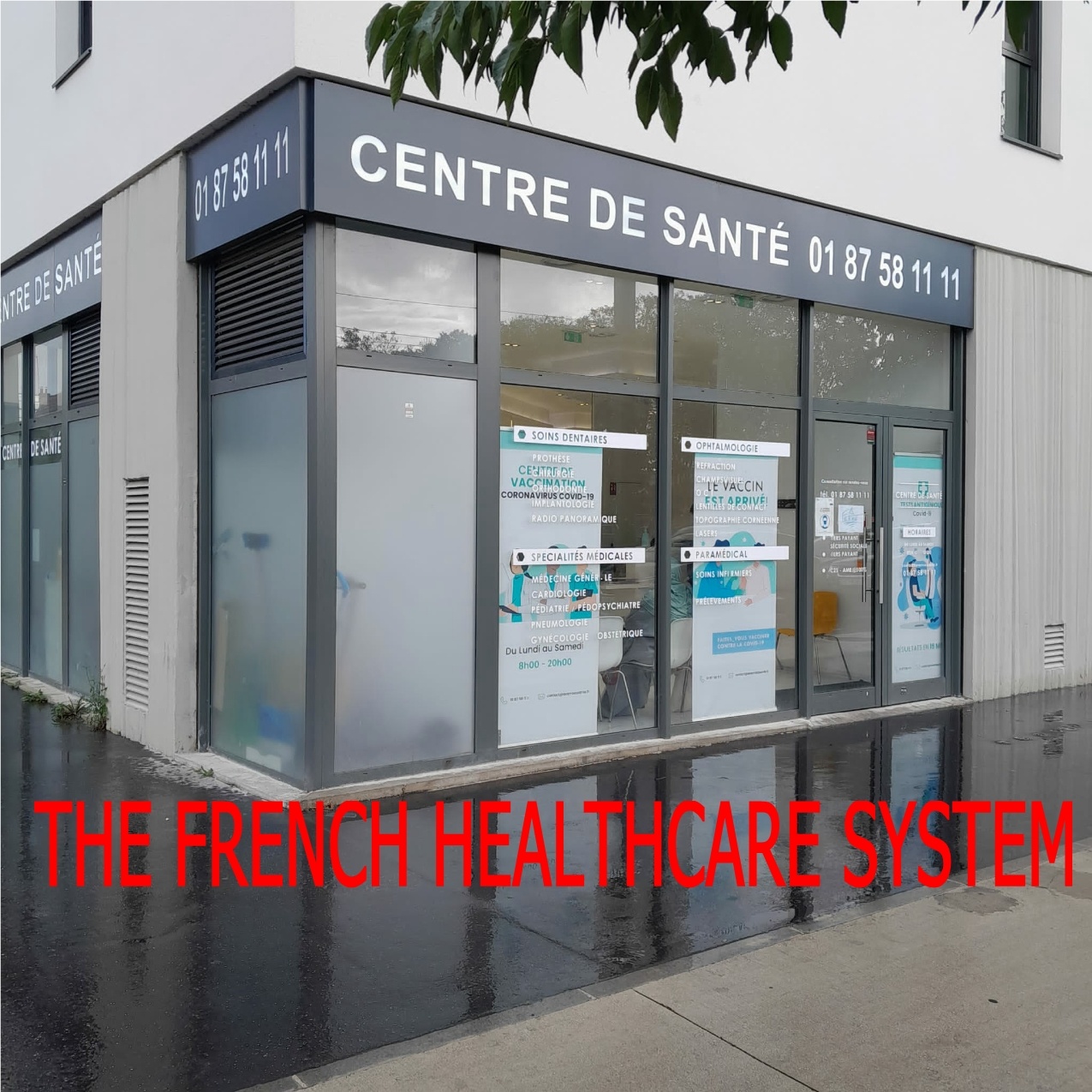By Dr. Boris Campos, Lorient, Brittany
Editorial note: with the Left of the Labour Movement in the UK vigorously defending the principles on which the NHS was founded 75 years ago, this article from a practising doctor in France, gives useful insights into what might be in store for British workers if the Tories and right-wing Labour get their way. We published an article on 5th October 2023 answering questions from Dr. Campos about the NHS, which readers may find makes an interesting comparison.
In France, outpatient medical provision depends on the distribution of doctors across the country. But as any politician focused on the issue knows, the idea of even moderate restrictions on the right of doctors to choose the geographical location of their practice is to expose oneself to virulent protests from the main representatives of the medical profession.
The profession is very attached to this principle and, until now, no minister of health has had the political courage to oppose it head-on.
Free choice of location, or “freedom of installation” as it is called in France, is not an innocent formulation for this cornerstone of private medical practice. It is difficult to oppose “freedom”. By defending the freedom of installation, the representatives of the medical profession pose as heroes of freedom in general, of pushing back against bureaucratic state control. This posture is designed to win the support of the population.
But basically, this “freedom” is a hypocritical designation for leaving the regulation of the profession to the market, to letting access to medical care be determined by competition and profitability. And within the framework of this regulation by market forces, the principles of private medicine are not only about “freedom of installation”.
The right of doctors to fix prices
It also involves the rights of doctors to fix prices and demand direct payment by their patients, the rights of the latter to choose their doctor, and the freedom of prescription, all of which have been underpinned historically by the system of “payment by act”, in which each and every medical act generates a corresponding fee to the doctor.
All of these elements contribute to the competitive nature of private medical practice as a whole. The idea behind it is fairly simple: market forces ensure a diversified network of healthcare facilities at variable prices and the patients go wherever they want.
If demand is strong, newly set-up practices will be successful. If demand is low, then insufficient profits will encourage doctors close down their practices and move elsewhere. One way or another, according to this doctrine, everyone is “free”.
However, in reality, things are not so simple. Whether the supporters of ‘liberal’ or private medicine accept it or not, competition creates and maintains major inequalities. On the supply side of medical facilities, although doctors are twenty times more numerous per head of population than in 1900, doctors are even more unequally distributed across the country today than at that time. There are inequalities between the north and south of France, between cities and the countryside, between urban centres and peripheral areas, between wealthy and poor neighbourhoods.

And whereas doctors used to sound the alarm about an alleged medical plethora, the opposite phenomenon has been on the increase for decades. It is now a matter of fighting against the expansion of “medical deserts” and work overload. We believe that a large part of the problem, and therefore of the solution, lies in the very foundations of the currently dominant model of community medicine, we will examine the principles on which private medicine is based, one by one.
To begin with, the fee-per-service payment (payment by medical act) consists of payment to the doctor after each act of care (consultation, stitches, injection, contraceptive implant, etc.), whether by the patient (direct payment) or by a third-party organisation, such as public or private health insurance. This has been the dominant method of remuneration in community medicine for a long time and was extended to the hospital system in 2009 under the name of activity-based pricing (also called T2A).
Payment per treatment distorts the healthcare service
We will return to fee-per-service payment in more detail in a future article about the challenges of modern medicine. Let us just say here that it generates a “race to act” on the part of medical practitioners, which is the healthcare equivalent of the right-wing doctrine of “work more to earn more” for the working class as a whole, and tends to value only what is “rated”, meaning the activities relating to care that actually bring in money.
The time that a private health professional devotes to prevention or to consultation with colleagues to discuss a complex case is not remunerated. The perverse effects of the fee-per-service system in this respect are so flagrant that public authorities are seeking to diversify remuneration methods in the hope of changing practices, in particular by opening up the possibility of compensating meeting time.
Payment per service stands in opposition to what we might call payment by function, which is really a synonym for direct employment for a wage. This latter method of remuneration would make it possible to integrate the time devoted to prevention and multi-professional consultation directly into working time, while freeing the professional from all the administrative tasks which presently burden private doctors, for which they are not trained and which they are not really the best use of their time and energy.
In addition, it would allow them to access a status providing better social protection and pension rights than the private sector does. These advantages could make salaried employment attractive to new generations of doctors, looking for a better balance between professional and private life. And yet the idea of wage employment for doctors runs up against a wall of distrust and hostility on the part of the medical profession.
Treatment prices fixed by doctors and health insurance companies
The Direct Agreement (Entente Directe) combines pricing freedom by the doctor and direct payment by the patient after treatment. The principle of pricing freedom is partially called into question by the compulsory health insurance: by committing to asking the patient for a rate that has been negotiated with social security, the doctor practising in “sector 1” has limited pricing freedom, since the price of a medical procedure is no longer the result of a direct negotiation between the doctor and the patient, but between the profession and the health insurance organisation.
From individual price negotiation, we go over to collective negotiation. This is an undeniable protection for the patient, but it would be wrong to believe that this is contrary to the interests of the medical profession, in that it makes hundreds of thousands of patients financially viable, with even the poorest sections of society being able to access levels of care that were previously unthinkable.
In doing so, Social Security has made it possible to considerably increase the demand for care and therefore to ensure substantial income for a larger medical population than before. There remains the possibility of exceeding fees by what is called “Sector 2 pricing” or by operating outside of agreement, which allows the practice of freely fixing fees without reimbursement by Social Security. These fees must be determined with “tact and moderation”, as recommended by the Medical Code of Ethics.

Excess charges above Social Security limits are met by patients
It is through these provisions that every year, tactfully and moderately, more than 2.5 billion euros are taken from patients, directly or indirectly. The possibility of exceeding fees negotiated with the Social Security was introduced in 1980 to allow doctors’ income to increase without increasing social security expenses. This was, in essence, a means of offloading health expenditure onto the sick, because the Social Security reimburses the patient according to the agreed prices, and the additional sum imposed by the doctors is not taken into account and must therefore be paid by the patient.
The liberal conception of medicine sees no problem with this. We consider, however, that such practices give rise to a two-level medical system. This is why we are for the abolition of sector 2 and “non-conventional” pricing practices.
Regarding direct payment, in France, payment of the doctor by the patient is the norm. Third-party payment involves a minority of cases. The patient pays the doctor, and is then partially (or wholly, in some cases) reimbursed by Social Security. However, all studies show that up-front payment results in the patient postponing care or refusing care entirely.
How can we explain the profession’s resistance to total third-party payment, which would undoubtedly promote more universal access to care? The reasons are partly technical. If the recovery of the Social Security part works well, with less than 1% of rejected reimbursements), many problems persist in the recovery of the additional charges.
Irrational fear of “free at point of need” medical care.
These dysfunctions lead to an increase in administrative work. But it’s not just a technical question. A series of ideological arguments is often put forward, such as the fantasy of “overconsumption” of medical care and the irrational increase in health spending that completely “free” access to care would supposedly entail. However, ultimately, what is most disturbing to the medical profession is probably that the link between the main paying state-run agency (Social Security) would then become so obvious that one would wonder why the state is not also the employing agency.

Let us now look at the principle of the free choice of doctor by the patient. It is an idea that seems self-evident at first sight. However, it masks a concrete reality where the choice depends on medical density, the degree of urgency of the care required, and the necessary technical platform and skills involved. The more urgent, specialised or technical the care, the more restricted the patient’s choice will be.
The other concrete limit is that of levels of income. In certain urban areas, the “free choice” of a doctor in sector 2 or outside the Convention (the agreement between the Social Security and the medical profession) is reserved for those who have the means. The poorest have a more restricted “free choice” than the wealthy. This is not to say that we should impose patients on caregivers and vice versa. The possibility of obtaining a second medical opinion is, for example, an essential safeguard. But to speak of the doctor’s free choice as an abstract freedom while different levels of fees coexist amounts to accepting inequalities of access to healthcare.
Right of the patient to make an informed choice
To us, it seems more appropriate to highlight the participation and free choice of the patient in medical care. To be able to make an informed choice and act accordingly, the patient must have the means to appreciate the expected benefits, risks and uncertainties of the proposed treatment.
Healthcare professionals must be trained to develop this type of relationship with their patients. Healthcare is not just about medical treatment, but should also involve a form of popular education about public health.
A second article from Boris Campos on this subject will follow.



